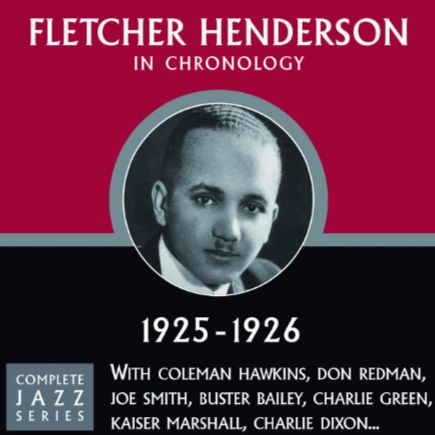Dinah: une pépite du répertoire jazz née de Broadway
Composée par Harry Akst avec des paroles de Sam M. Lewis et Joe Young, Dinah voit le jour en 1923 dans la comédie musicale Kid Boots, présentée à Broadway. Dès ses débuts, la chanson séduit par son énergie communicative et devient rapidement l’un des morceaux favoris des orchestres Dixieland et des pianistes stride et s’impose comme un standard du jazz.
La force de Dinah réside dans sa simplicité apparente. Sa structure harmonique claire et efficace constitue un cadre idéal pour l’improvisation, tout en laissant une grande liberté aux musiciens pour y injecter leur propre style. Sa mélodie vive et enjouée se prête à de multiples relectures: qu’il s’agisse de versions vocales ou instrumentales, d’arrangements pour petites formations ou pour big bands, Dinah offre un terrain de jeu propice à l’inventivité.
Sur le plan historique, Dinah reflète l’effervescence du jazz des années 1920 et 1930, une période de mutation où le genre s’émancipe de ses origines new-orléanaises pour explorer de nouvelles formes et textures sonores. Au fil des décennies, la chanson a été revisitée par une grande diversité d’artistes et de styles, du swing au bebop, du jazz manouche au cool jazz, témoignant de son étonnante plasticité et de sa capacité à traverser les époques sans perdre de sa fraîcheur.
L’élégance orchestrale de Fletcher Henderson
Enregistrée à New York le 6 janvier 1926, la version de Dinah par le Fletcher Henderson Orchestra illustre à merveille la transition entre le jazz des années 1920 et l’émergence du swing: en plein cœur du Harlem Renaissance, période d’effervescence artistique et culturelle à New York, elle s’affirme comme un catalyseur décisif.
Autour de Henderson au piano, l’ensemble réunit Russell Smith, Joe Smith et Luke Smith (trompettes), Charlie Green (trombone), Buster Bailey, Don Redman et Coleman Hawkins (clarinette et saxophones), Charlie Dixon (banjo), Ralph Escudero (tuba) et Kaiser Marshall (batterie).
Ce qui distingue cet enregistrement, ce sont avant tout les arrangements raffinés de Henderson. Visionnaire dans son rôle de chef d’orchestre et d’arrangeur, il conçoit une architecture sonore où cuivres et bois dialoguent avec une fluidité inédite, donnant à l’ensemble une richesse harmonique et une profondeur orchestrale nouvelles. Les solos y occupent une place centrale, particulièrement celui de Coleman Hawkins, qui s’impose ici comme l’un des premiers grands solistes de l’instrument, contribuant à élever son statut au sein du jazz.
Dinah: una joya del repertorio jazz surgida en Broadway
Compuesta por Harry Akst con letra de Sam M. Lewis y Joe Young, Dinah nació en 1923 en la comedia musical Kid Boots, estrenada en Broadway. Desde sus primeras interpretaciones, la canción conquistó al público con su energía contagiosa, convirtiéndose rápidamente en una de las favoritas de las orquestas Dixieland y de los pianistas stride, hasta consolidarse como un estándar del jazz.
La fuerza de Dinah radica en su aparente simplicidad. Su estructura armónica clara y eficaz proporciona un marco ideal para la improvisación, al tiempo que ofrece a los músicos gran libertad para imprimirle su estilo personal. Su melodía viva y alegre permite múltiples reinterpretaciones: ya sea en versiones vocales o instrumentales, para pequeños conjuntos o grandes orquestas, Dinah ofrece un terreno fértil para la creatividad.
Desde una perspectiva histórica, Dinah refleja la efervescencia del jazz de las décadas de 1920 y 1930, una época de transformación en la que el género empezó a emanciparse de sus raíces de Nueva Orleans para explorar nuevas formas y texturas sonoras. A lo largo de los años, la canción ha sido reinterpretada por una gran variedad de artistas y estilos, del swing al bebop, del jazz manouche al cool jazz, demostrando una notable plasticidad y una frescura que perdura en el tiempo.
La elegancia orquestal de Fletcher Henderson
Grabada en Nueva York el 6 de enero de 1926, la versión de Dinah por el Fletcher Henderson Orchestra ilustra de manera ejemplar la transición entre el jazz de los años veinte y el surgimiento del swing: en pleno corazón del Harlem Renaissance, período de gran efervescencia artística y cultural en Nueva York, se afirma como un catalizador decisivo.
Junto a Henderson al piano, el conjunto reunió a Russell Smith, Joe Smith y Luke Smith (trompetas), Charlie Green (trombón), Buster Bailey, Don Redman y Coleman Hawkins (clarinete y saxofones), Charlie Dixon (banjo), Ralph Escudero (tuba) y Kaiser Marshall (batería).
Lo que distingue esta grabación son, ante todo, los refinados arreglos de Henderson. Visionario en su papel de director y arreglista, concibió una arquitectura sonora donde metales y maderas dialogan con una fluidez inédita, otorgando al conjunto una riqueza armónica y una profundidad orquestal nuevas. Los solos ocupan aquí un lugar central, en particular el de Coleman Hawkins, que se impone como uno de los primeros grandes solistas del saxofón tenor, contribuyendo a elevar su estatus dentro del jazz.
Dinah: una gemma del repertorio jazz nata a Broadway
Composta da Harry Akst con testi di Sam M. Lewis e Joe Young, Dinah nasce nel 1923 nel musical Kid Boots, presentato a Broadway. Fin dalle prime esecuzioni, la canzone conquista per la sua energia contagiosa e diventa rapidamente uno dei brani prediletti dalle orchestre Dixieland e dai pianisti stride, affermandosi come uno standard del jazz.
La forza di Dinah risiede nella sua apparente semplicità. La struttura armonica chiara ed efficace offre un contesto ideale per l’improvvisazione, lasciando ampio spazio all’inventiva personale dei musicisti. La melodia vivace e spensierata si presta a innumerevoli riletture: interpretazioni vocali e strumentali, arrangiamenti per piccoli ensemble o grandi big band, Dinah rappresenta un terreno fertile per l’esplorazione creativa.
Dal punto di vista storico, Dinah incarna l’effervescenza del jazz degli anni Venti e Trenta, un periodo di transizione in cui il genere si emancipa dalle sue origini di New Orleans per avventurarsi in nuove forme e colori sonori. Nel corso dei decenni, il brano è stato reinterpretato da una vasta gamma di artisti e stili, dallo swing al bebop, dal jazz manouche al cool jazz, dimostrando una straordinaria versatilità e una freschezza sempre attuale.
L’eleganza orchestrale di Fletcher Henderson
Registrata a New York il 6 gennaio 1926, la versione di Dinah del Fletcher Henderson Orchestra illustra perfettamente la transizione tra il jazz degli anni Venti e l’emergere dello swing: nel cuore del Harlem Renaissance, periodo di intensa effervescenza artistica e culturale a New York, si afferma come un catalizzatore decisivo.
Accanto a Henderson al pianoforte, l’ensemble riuniva Russell Smith, Joe Smith e Luke Smith (trombe), Charlie Green (trombone), Buster Bailey, Don Redman e Coleman Hawkins (clarinetto e sassofoni), Charlie Dixon (banjo), Ralph Escudero (tuba) e Kaiser Marshall (batteria).
Ciò che distingue questa registrazione sono soprattutto gli arrangiamenti raffinati di Henderson. Visionario nel suo ruolo di direttore e arrangiatore, concepì un’architettura sonora in cui ottoni e legni dialogano con una fluidità inedita, donando all’ensemble una nuova ricchezza armonica e una profondità orchestrale. I soli vi occupano un posto centrale, in particolare quello di Coleman Hawkins, che qui si impone come uno dei primi grandi solisti del sassofono tenore, contribuendo ad elevare lo status dello strumento all’interno del jazz.
Dinah: a jazz gem born on Broadway
Composed by Harry Akst with lyrics by Sam M. Lewis and Joe Young, Dinah was introduced in 1923 in the Broadway musical Kid Boots. From its earliest performances, the song captured audiences with its infectious energy and quickly became a favorite among Dixieland bands and stride pianists, eventually establishing itself as a jazz standard.
The strength of Dinah lies in its apparent simplicity. Its clear and effective harmonic structure offers an ideal framework for improvisation while allowing musicians the freedom to infuse it with their own stylistic voice. Its lively, upbeat melody lends itself to a wide range of interpretations—vocal and instrumental versions, arrangements for small groups or big bands—making Dinah a fertile ground for musical inventiveness.
Historically, Dinah reflects the vibrancy of 1920s and 1930s jazz, a period of transformation in which the genre began to break away from its New Orleans roots to explore new forms and textures. Over the decades, the song has been reimagined by artists across a spectrum of styles—from swing to bebop, from gypsy jazz to cool jazz—demonstrating its remarkable adaptability and enduring freshness.
The orchestral elegance of Fletcher Henderson
Recorded in New York on January 6, 1926, the Dinah version by the Fletcher Henderson Orchestra perfectly illustrates the transition between 1920s jazz and the rise of swing: at the very heart of the Harlem Renaissance, a period of intense artistic and cultural effervescence in New York, it stands out as a decisive catalyst.
Alongside Henderson on piano, the ensemble included Russell Smith, Joe Smith, and Luke Smith (trumpets), Charlie Green (trombone), Buster Bailey, Don Redman, and Coleman Hawkins (clarinet and saxophones), Charlie Dixon (banjo), Ralph Escudero (tuba), and Kaiser Marshall (drums).
What distinguishes this recording above all are Henderson’s refined arrangements. A visionary in his role as bandleader and arranger, he designed a sonic architecture where brass and reeds engage in unprecedented dialogue, giving the ensemble a new harmonic richness and orchestral depth. Solos take on a central role, particularly that of Coleman Hawkins, who emerges here as one of the first great tenor saxophone soloists, helping to elevate the instrument’s status within jazz.


